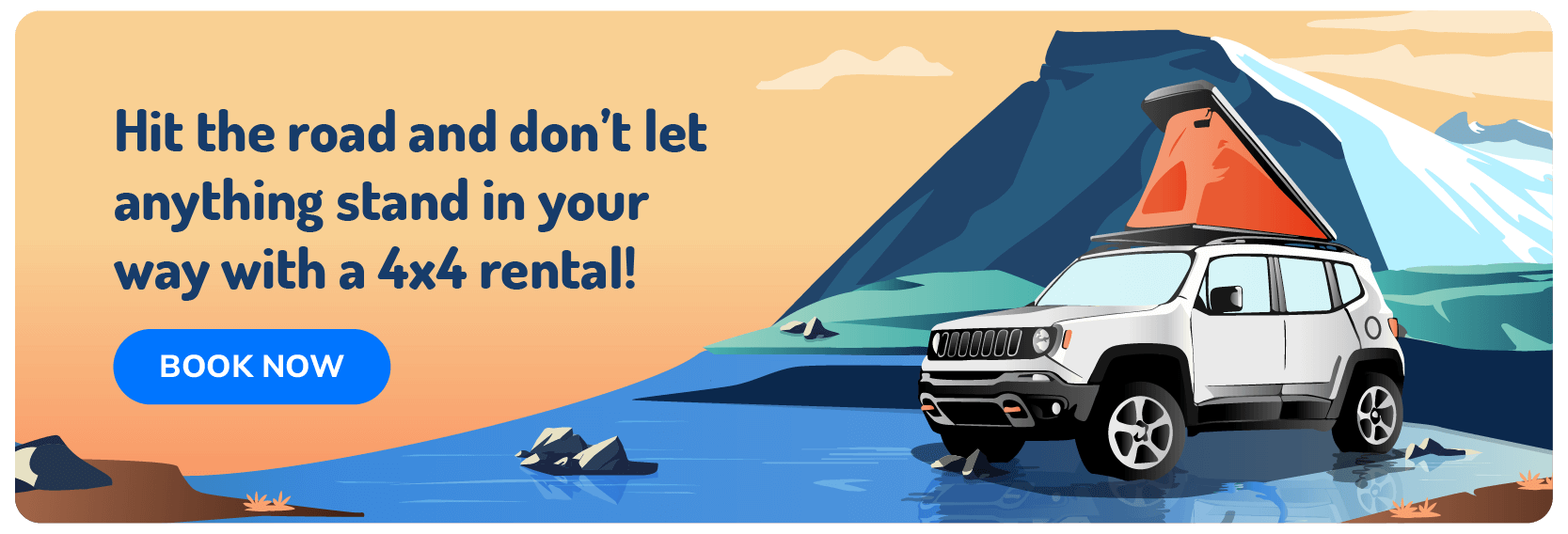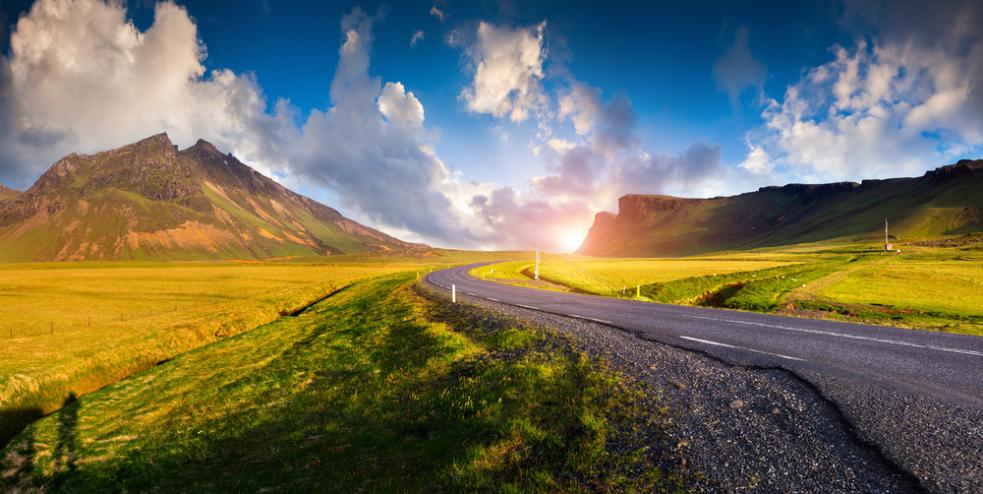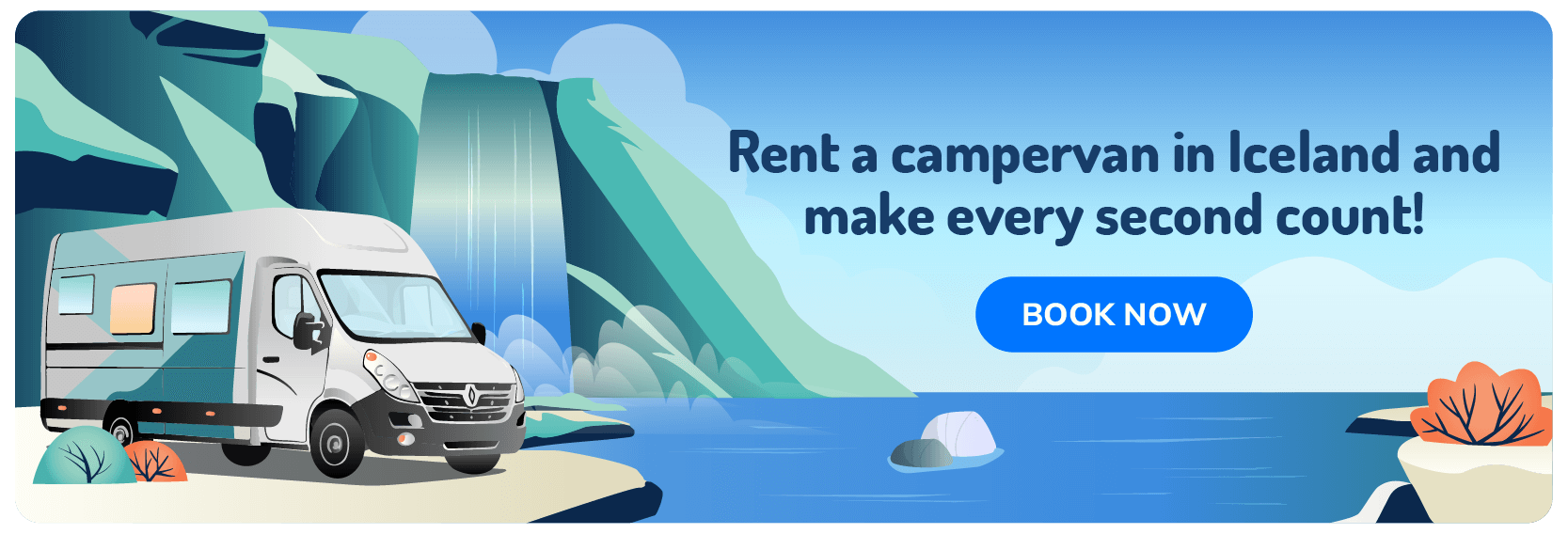With its many natural wonders, Iceland is an ideal country for exploring by road. There are several classic road trip routes that take in different parts of the country. Each one has its own merits with some being suitable year-round and others best for summer trips.
There are short Iceland road trips that can be completed in a day or two. And there are longer routes that you should take your time over. But what is it like driving in Iceland? In this article, we take you through the ins and the outs.
We will explore the different Icelandic road conditions from season to season. We will also delve into the rules of the road and tips for driving safely in Iceland. Read on for our essential guide to exploring Iceland by road.

What are the driving laws in Iceland?
The first rule of driving safely is understanding the rules of the road and the driving laws. As in much of Europe and the US cars in Iceland drive on the right-hand side of the road. The Iceland speed limit for the different roads is as follows.
- 90 km/h on tarmac roads in rural areas
- 80 km/h on gravel or dirt roads
- 50 km/h on urban roads in populated areas
Note though that these are the maximum speeds to drive if you have perfect road conditions. As soon as that temperamental Iceland weather decides to bite you’ll need to adjust your speed accordingly.

Speeding fines and other laws
Iceland has a strict and hefty fining policy for those caught exceeding the speed limit. And you may well not know about it until you arrive back home and receive a letter. The fines can reach as high as $600 US dollars depending on how far above the speed limit you were driving.
The other law to bear in mind is that there is a zero-tolerance for driving under the influence of alcohol. This is strictly enforced and again the fines are hefty. You might be used to being able to drink a pint or a glass of wine with dinner and then drive. But think again. In Iceland, this is forbidden.
Other rules of the road are to always obey the road signs. As you may have heard, there are many gravel roads in Iceland. Some of these roads can be driven in regular rental cars or campervans. While others you will need to rent a 4 x 4 campervan or 4 x 4 rent a car to drive them.
These are Iceland’s famous F roads. They are mostly lofty mountain roads in the highlands and are only accessible in the summer months. Don’t worry though as there will always be clear road signage explaining where you are and aren’t allowed to drive.

Are the roads in Iceland busy?
Iceland’s population is tiny in comparison to most other countries. There are only around 330,000 inhabitants on the island. Although it is quite a small island, this still means that there are large swathes of sparsely populated land. Most people live in the cities of Reykjavik in the south and Akureyri in the north. This means that the roads, in general, are really not that busy.
Of course, this does depend very much on the season. Iceland has a high season that runs for the summer months of June, July, and August. This is by far the busiest time, both on and off the roads. The busiest roads are in the south around Reykjavík, Keflavik International Airport and the nearby Blue Lagoon. Tour buses head out of the capital for day tours around the popular Golden Circle route. Buses also run day trips around the southern Iceland Ring Road to the sights of Iceland’s South Coast.

Keep in mind that at this time of year there will also be an influx of visitors on self-drive trips. Some of them might be behind the wheel of a larger vehicle than they are used to. Some may be unused to driving on the right or unsure about the rules of the road. Others might be distracted by the incredible views surrounding them. Just keep all of this in mind, be patient and steady and adjust your driving to suit the conditions.
As you head into the highlands or towards the north of the country, the roads will be quieter. Of course, if you are hitting the road in winter or the shoulder seasons, the roads will be quieter too. In fact, you may well find that you see very few other vehicles for hours. If you’d like to have the roads more to yourself, then consider visiting Iceland in the low season. Alternatively, you could head to the less-visited north in high season.
Tell me more about the road surfaces?
If you are driving the Ring Road or in the south, the majority of routes will be paved roads. You will only be driving on gravel surfaces when you turn off the main road into parking lots. If you do head to the highlands or to the north, then there are more gravel roads to negotiate.
In these areas, you should drive much more slowly especially when passing other vehicles. One more thing to look out for is a single lane bridge road sign. There are a few in Iceland so do approach with caution.
What vehicle should I hire in Iceland?
This all depends on you and your planned road trip. If you are visiting in summer and planning on driving the Ring Road then hiring a camper van is ideal. This will mean that you can sleep and eat in your wagon and you won’t have too big a vehicle to maneuver and park. If you have more time or plan on driving a shorter route then a motorhome offers you much more comfort. For more information, visit our article on the differences between camper vans and motorhomes.

If however, you would like to explore the highlands, then you will need to hire a four-wheel drive campervan. These rough gravel surfaces can’t be tackled in a two-wheel drive and can only be accessed in summer. If you travel in Iceland in winter then you may feel more comfortable in a 4 x 4 camper. You will have more space to spread out and nervous drivers will feel more secure.
Is driving off-road allowed?
No, driving off-road in Iceland is illegal. This is to protect the delicate plant life of the island. There are some very sensitive mosses and grasses in this windswept land. If there is any damage to them it takes them a long time to recover. The same rule goes for parking off-road and pulling up at the side of the road.
Neither are allowed for the same reason as well as for safety reasons. So if you see an amazing view of the Northern Lights and feel compelled to pull over please don’t. There are plenty of pull-in areas at regular intervals on Iceland’s roads. So stay safe and drive on the short distance to the next one before stopping. The roads are often quite narrow in Iceland so stopping on the side of the road can be dangerous.
Does the weather affect road conditions?
Yes, very much so. In winter, the road conditions in Iceland can get quite tricky. With high winds and flurries of snow, you do need to have your wits about you. You will need winter tires to drive safely in the snow and ice. You will also need to adjust your speed to the conditions. If a storm blows in then there could be unexpected road closures. You might also be forced to a standstill by the weather.
Always check the weather forecast and adjust your travel plans accordingly. You may need to stay at your campground and not venture out for a day or so. If you are caught in a storm while driving then here’s what to do. Drive to the next safe place to pull in off of the road.
Check the forecast on your phone and see when it is likely to blow over. As a safely precaution you should always keep a charged phone and a spare battery or charger with you. There are lots of mobile weather and road safety apps for tourists in Iceland.
.jpg)
You should also keep well stocked with water, snacks and gas. Rule of thumb is that if you see a gas station pull over and top up. Carry a credit card with you for the unmanned gas stations too. If the worst comes to the worst then you can inform search and rescue of your whereabouts. They are of course well used to operating in the harsh conditions that the Iceland weather can throw at you.
Road travel in Iceland in summer is much breezier. In general, the weather will be more settled. This is not a hard and fast rule though. There can still be high winds that would make driving a large motorhome dangerous. Strong winds can also snatch your vehicle door away from you when you open it. So always park with this in mind and open your door with caution. There can be snow flurries or heavy rain that will all affect the road conditions. Especially if you are driving during the shoulder seasons as the weather turns.
What other hazards might I encounter on the road?
We have taken you through most of the scenarios that you could encounter on the roads. One final one to mention is to watch out for wandering sheep! Iceland is home to more sheep than people and they graze on unfenced land. This means that they can and do meander onto the road in search of greener grass on the other side. So watch out for our woolly friends especially on blind corners.


